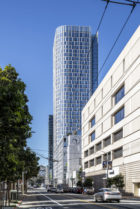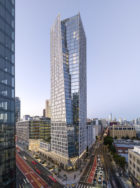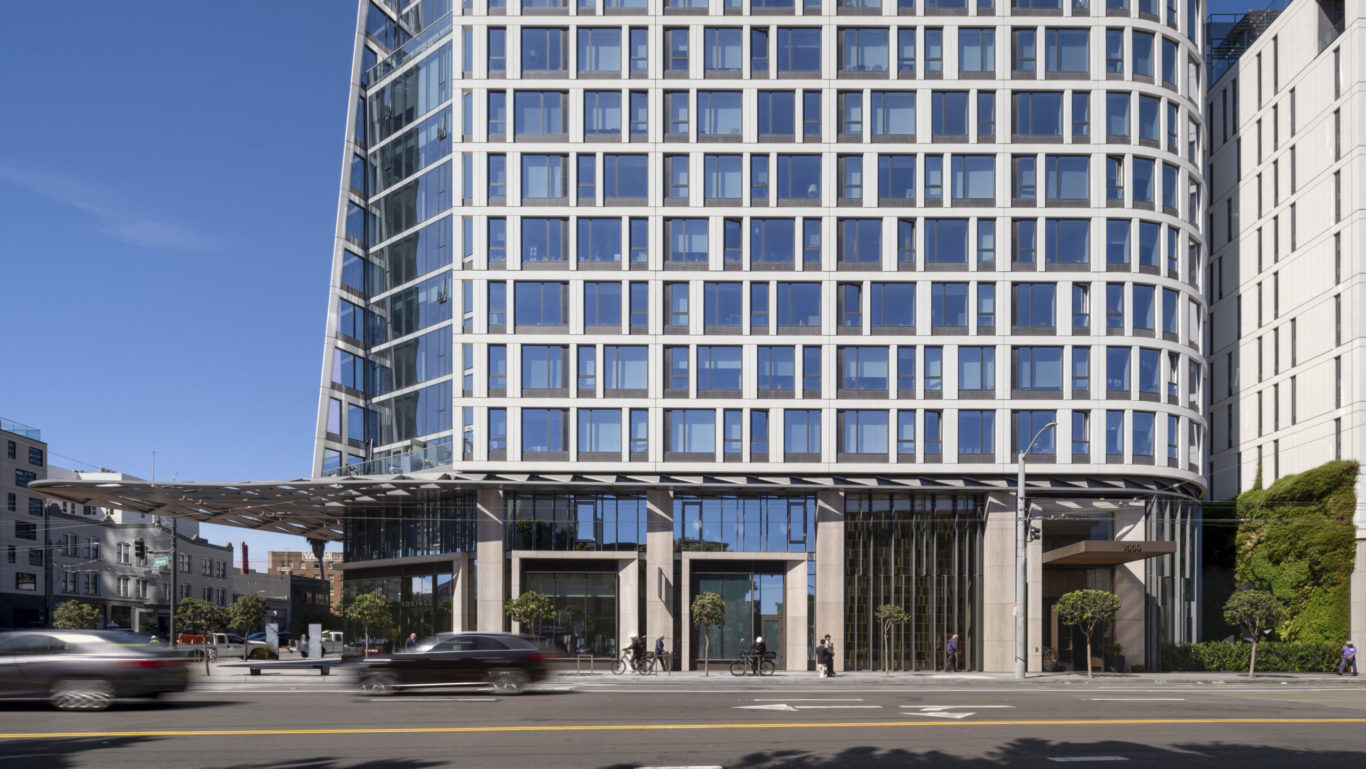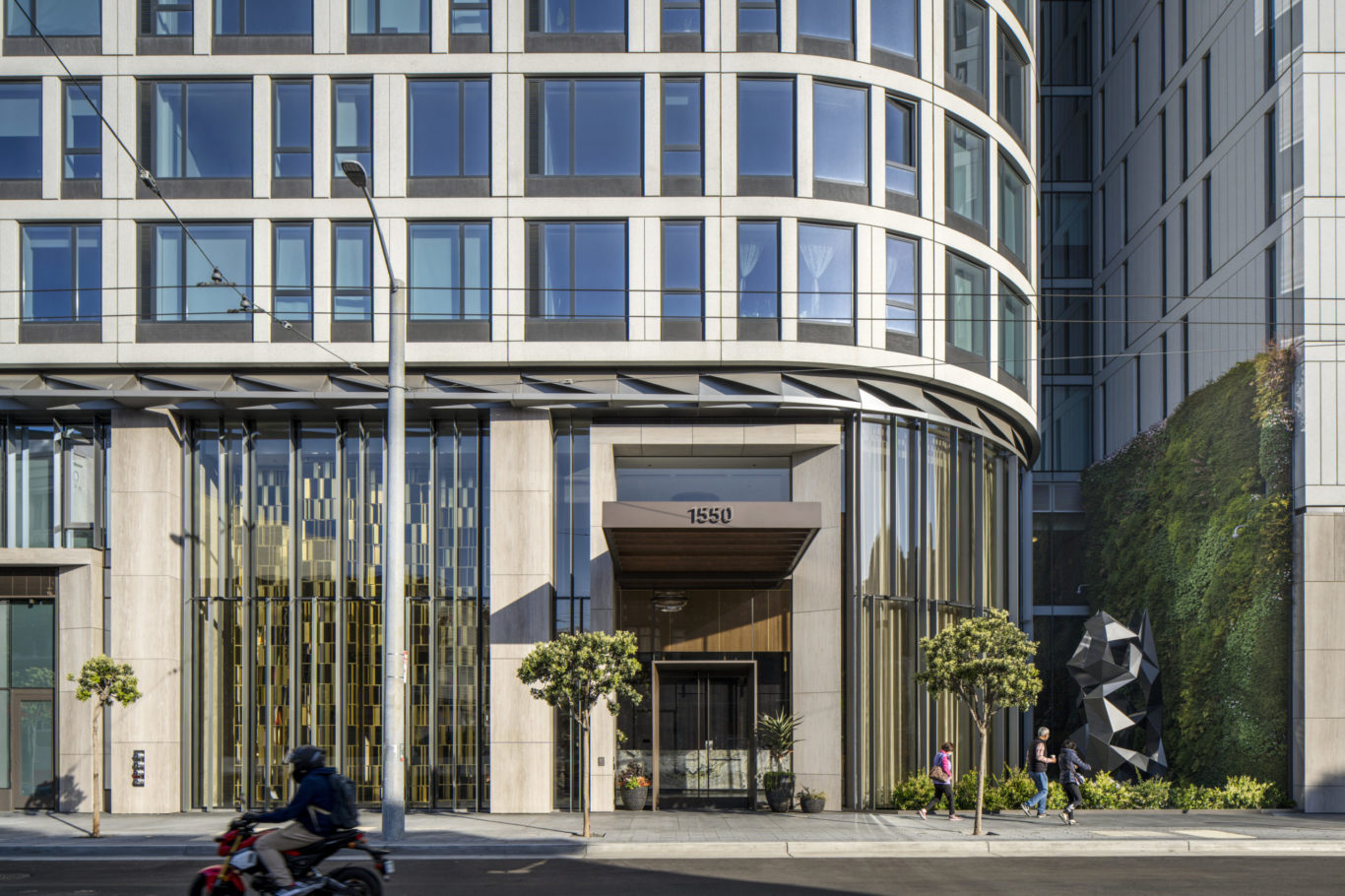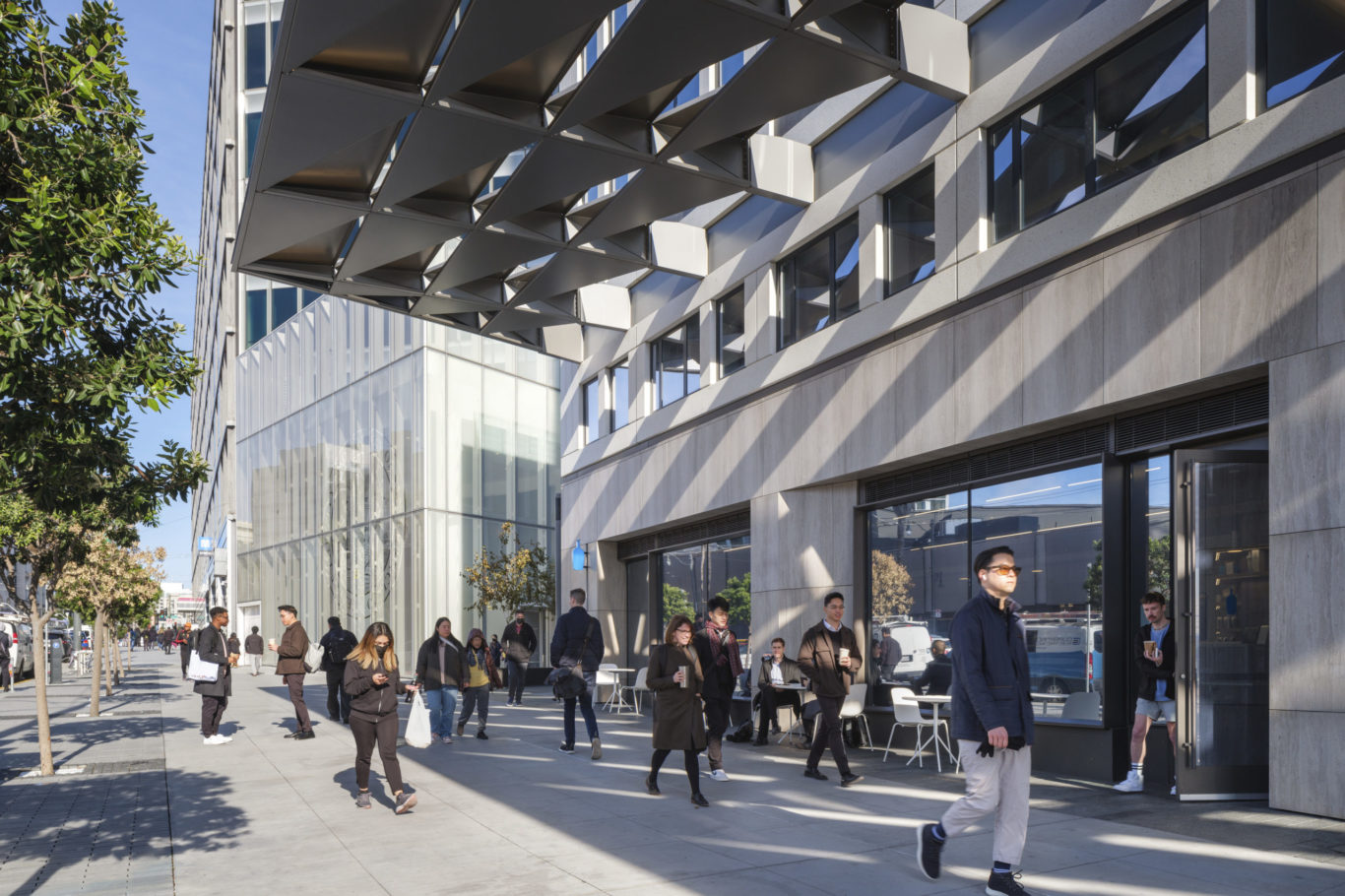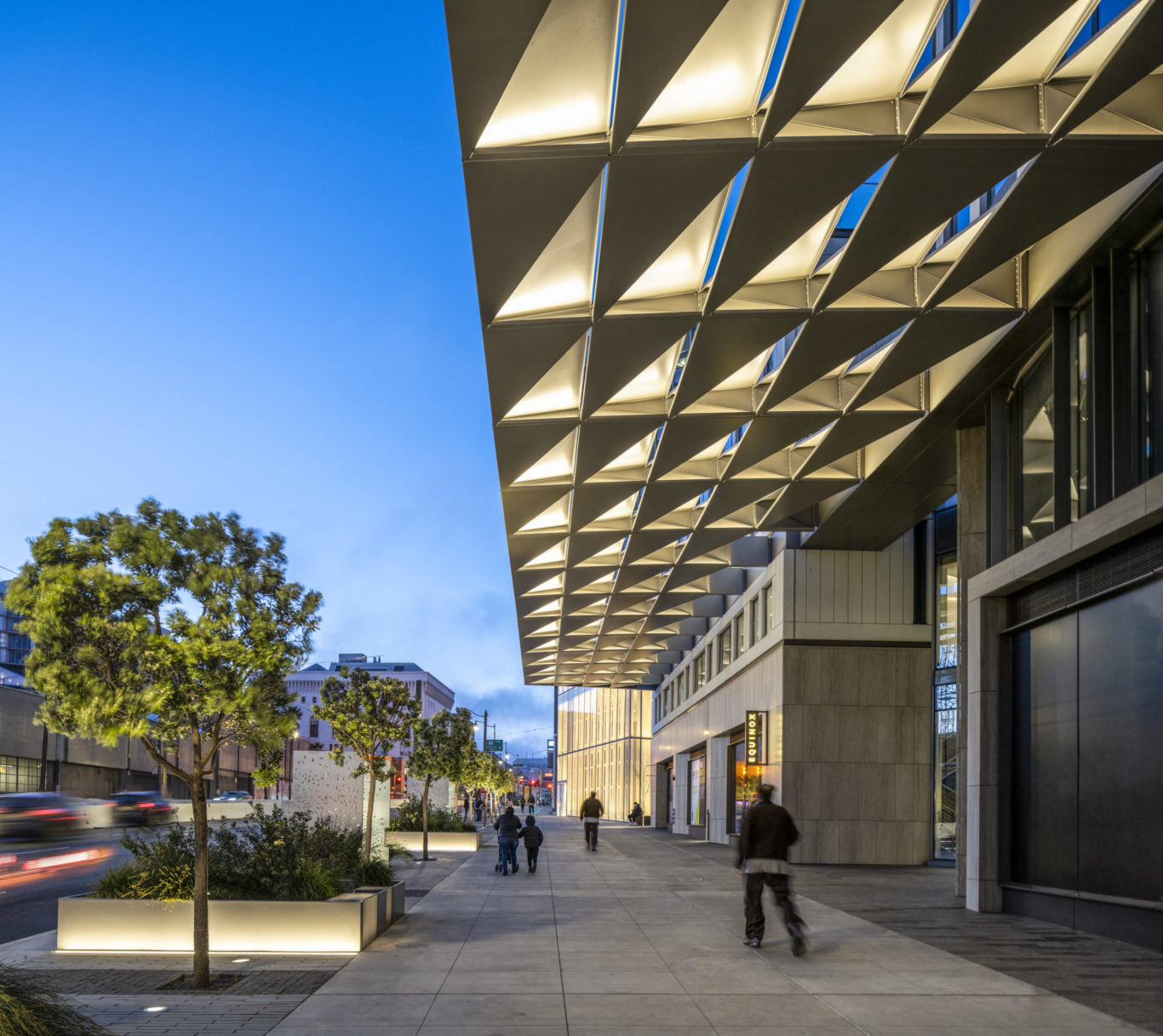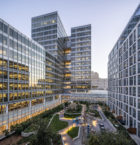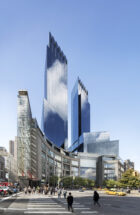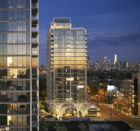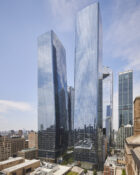Creating a neighborhood anchor
Located on a triangular 2.5-acre site just beyond Civic Center, 1500 Mission Street is one half of a mixed-use development which also includes a municipal office building—49 South Van Ness—as well as the adaptive reuse of a former bottling factory.
This 550-unit residential tower’s urban presence is informed by a design process that included meetings with a diverse group of stakeholders including neighbors and government early on, with a particularly collaborative relationship with the City Planning Department. The mixed-use site plan offered the ability to integrate public and private spaces that add to the vitality of the highly walkable and transit-accessible South of Market (SoMA) area. The project includes 110 units affordable to low income residents, nearly twice the base requirement at the time.
Key to the notion of livable urban density is a wide range of open space distributed throughout the project. These spaces include a compact ground floor garden adjacent to the entry, to a 15,000-square-foot second level courtyard, a fifth-level dog park, a south-facing, 11th-floor pool deck, and a shared penthouse-level terrace with spectacular skyline views.


